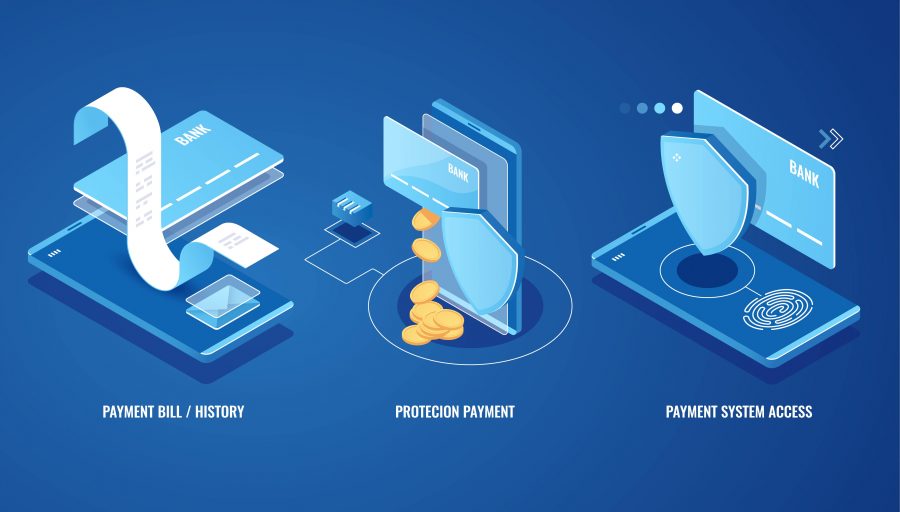Due to the impact of COVID-19, digital banking is expected to rise and transform the financial service industry in Malaysia. This requires digital banks to comply with the digital banking framework issued by Bank Negara Malaysia (BNM). But what is digital banking, how does it work and are businesses and consumers ready for it? Read this article by Hasnah Abdul Rahman to find out.

Digital banking is the digitization (or moving online) of all the traditional banking activities and programs services that historically were only available to customers when physically inside of a bank branch. This includes activities like
- Money Deposits, Withdrawals, and Transfers
- Checking/Saving Account Management
- Applying for Financial Products
- Loan Management
- Bill Pay
- Account Services
Consumer preferences quickly shifted to online and mobile devices, but many financial organizations struggle to adapt their banking experiences to online channels and to the smaller mobile device screens. Unfortunately, banks can no longer afford to wait to invest in digital transformation because customers are increasingly willing to switch banks for digital features such as bill pay, mobile payments and loan applications.
In addition, until the past few years, banks were not envisioning the tremendous shift in consumer behavior that occurred as a result of the millennial generation becoming the largest consumers of financial products. Today, more than 70% of consumers report banking online at least once per month, so banks invest in great online experiences.
The good news is that according to Deloitte’s 2019 Banking and Capital Markets Outlook, banks are finally starting to prioritize their digital banking efforts to match consumer expectations. 28% of banks cite “create digital capability” as their primary digital technology initiative this year, while “modern legacy systems” came in second with 23%. That’s good news for consumers that over 50% of banks are making their evolution to digital banking their top priorities.
What is the Difference Between Online and Digital Banking?

For the most part, these two words are synonyms. But, we define online banking a bit more narrowly than digital banking: online banking primarily focuses on remote deposits, money transfers, bill pay and basic online management of accounts. Other synonyms for online banking include internet banking, virtual banking and e-banking.
So, online banking focuses on digitising the “core” aspects of banking, but digital banking encompasses digitising every program and activity undertaken by financial institutions and their customers.
As the government of Malaysia implemented the Mandatory Control Order (MCO), Malaysian fin-tech players are looking towards moving to Digital Banking as the New Normal over regular banking. Digital banking, once a place for you to check account balances and transfer money, currencies and digital/crypto wallets will soon become the avenue for everyday Malaysians to conduct services in continuation of the SOP.
Digital Banking Licences
Though digital disruption of the banking industry is inevitable – the COVID-19 crisis has turned into an unlikely catalyst to spur the adoption of digital banks in Malaysia. In January this year, Bank Negara announced that it will issue up to five Digital Banking Licenses in 2022.
Nevertheless, Azizi Khan, a Malaysian who is currently building a digital bank out of Melbourne, Australia, said that digital banks can only truly make a difference and challenge the incumbents if they are truly innovative. It’s simply not enough just to have a pretty app. He mentions that there is a worrying trend with a “me too” movement of consortiums trying to get into the popularity of digital banks and needs of the market without anything substantial. He wonders if it’s a move to build up their own customer base, namely telco.
Azizi, in an exclusive interview with NMH, also said that one of the key criteria of digital banks is innovation and product simplification and differentiation. Many entrants simply have too few products making them a non threat to the incumbents.
Azizi observered that digital banks in Asia is a huge opportunity as there is a large base of unbanked and under banked.
A digital bank represents a virtual process that includes online banking and beyond. As an end-to-end platform, digital banking must encompass the front end that consumers see, the back end that bankers see through their servers and admin control panels and the middleware that connects these nodes. Ultimately, a digital bank should facilitate all functional levels of banking on all service delivery platforms. In other words, it should have all the same functions as a head office, branch office, online service, bank cards, ATM and point of sale machines.
Major benefits of digital banking are:
- Business efficiency – Not only do digital platforms improve interaction with customers and deliver their needs more quickly, they also provide methods for making internal functions more efficient. While banks have been at the forefront of digital technology at the consumer end for decades, they have not completely embraced all the benefits of middleware to accelerate productivity.
- Cost savings – One of the keys for banks to cut costs is automated applications that replace redundant manual labor. Traditional bank processing is costly, slow and prone to human error, according to McKinsey & Company. Relying on people and paper also takes up office space, which runs up energy and storage costs. Digital platforms can future reduce costs through the synergies of more qualitative data and faster response to market changes.
- Increased accuracy – Traditional banks that rely mainly on paper processing can have an error rate of up to 40%, which requires reworking. Coupled with lack of IT integration between branch and back office personnel, this problem reduces business efficiency. By simplifying the verification process, it’s easier to implement IT solutions with business software, leading to more accurate accounting. Financial accuracy is crucial for banks to comply with government regulations.
- Improved competitiveness – Digital solutions help manage marketing lists, allowing banks to reach broader markets and build closer relationships with tech savvy consumers. CRM platforms can track customer history and provide quick access to email and other forms of online communication. It’s effective for executing customer rewards programs that can improve loyalty and satisfaction.
- Greater agility – The use of automation can speed up both external and internal processes, both of which can improve customer satisfaction. Following the collapse of financial markets in 2008, an increased emphasis was placed on risk management. Instead of banks hiring and training risk management professionals, it’s possible for risk management software to detect and respond to market changes more quickly than even seasoned professionals.
- Enhanced security – All businesses big or small face a growing number of cyber threats that can damage reputations. In February 2016 the Internal Revenue Service announced it had been hacked the previous year, as did several big tech companies. Banks can benefit from extra layers of security to protect data.
Digital or virtual banks are an opportunity for disruption across the financial service sector — impacting both challengers (entrants) and incumbent (traditional) banks. Besides promoting innovation, the Central Bank’s vision is for digital banks to enhance financial inclusion for the underserved and help grow small and medium-sized enterprises (SMEs) in Malaysia.
The regulators on 31 December 2020, stated that the licensing framework for digital-only banks will support the application of the latest technologies that could enhance the financial well-being of the country while also promoting sustainable growth. It includes expanding access to and encouraging responsible usage of the relevant financial products and services to the financially unserved and underserved population segments.
A set of simplified regulatory guidelines will be applied to local neo-banks during the initial stage of their operations in order to achieve these goals. For starters, digital banks are required to possess an asset threshold of up to RM3 billion (approximately USRM3068.22 million) for three to five years.
“This [serves] as a foundational phase for the licensees to demonstrate their viability and sound operations, and for the Bank to observe the performance of the licensed digital banks and attendant risks that arise from their operations,” the Central Bank stated in the framework.
Azizi however pondered if BNM’s large capital requirements for the banking licence was a right move as it stops smaller players from entering the market. “This is different from the UK where small players were welcomed to come in and eventually grew into big strong banks like Starling and Monzo,” he added.
Balanced Approach
BNM however explained that the digital bank in Malaysia framework tries to forge a balanced approach, to enable the entry of digital banking challengers with meaningful value propositions, attempting to protect the stability of the nation’s financial ecosystem, as well as safeguarding depositors’ interests.
The regulator said that the licensing framework was created to “enable innovative application of technology to uplift the financial well-being of individuals and businesses and foster sustainable growth” which includes expanding “meaningful access” and “promoting responsible usage of suitable financial solutions to unserved and underserved segments”.
It added that the framework adopts a balanced approach to enable admission of digital banks with strong value propositions whilst safeguarding the integrity and stability of the financial system as well as depositors’ interests.
During the initial phases, the Central Bank will be requiring all-digital banks to follow a simplified regulatory framework that covers capital adequacy, liquidity, stress testing, Shariah governance, and public disclosure guidelines.
The institution added that digital banking platforms will have to adhere to the requirements outlined under the nation’s Financial Services Act 2013 (FSA) or Islamic Financial Services Act 2013 (IFSA). This reportedly sets standards on prudential, Shariah, business conduct, and consumer protection, along with anti-money laundering (AML) and terrorism financing regulations.
Malaysia joins a growing number of countries in Asia who are each introducing their own version of a digital banking framework. In 2019, Hong Kong announced that they have granted eight entities licenses to operate a digital bank which includes Chinese tech giants like, Ant Group, Tencent, Ping An and ZhongAn.
Meanwhile across the causeway, the Monetary Authority of Singapore issued four digital banking licenses to the Grab-Singtel consortium, SEA Group, Ant Group, a consortium comprising of Greenland Financial Holdings, Linklogis Hong Kong, and Beijing Co-operative Equity Investment Fund Management.
Similarly in the Philippines, Bangko Sentral ng Pilipinas has also made changes to its regulations to pave the way for digital banking in the country. – New Malaysia Herald


New Malaysia Herald publishes articles, comments and posts from various contributors. We always welcome new content and write up. If you would like to contribute please contact us at : editor@newmalaysiaherald.com

Facebook Comments